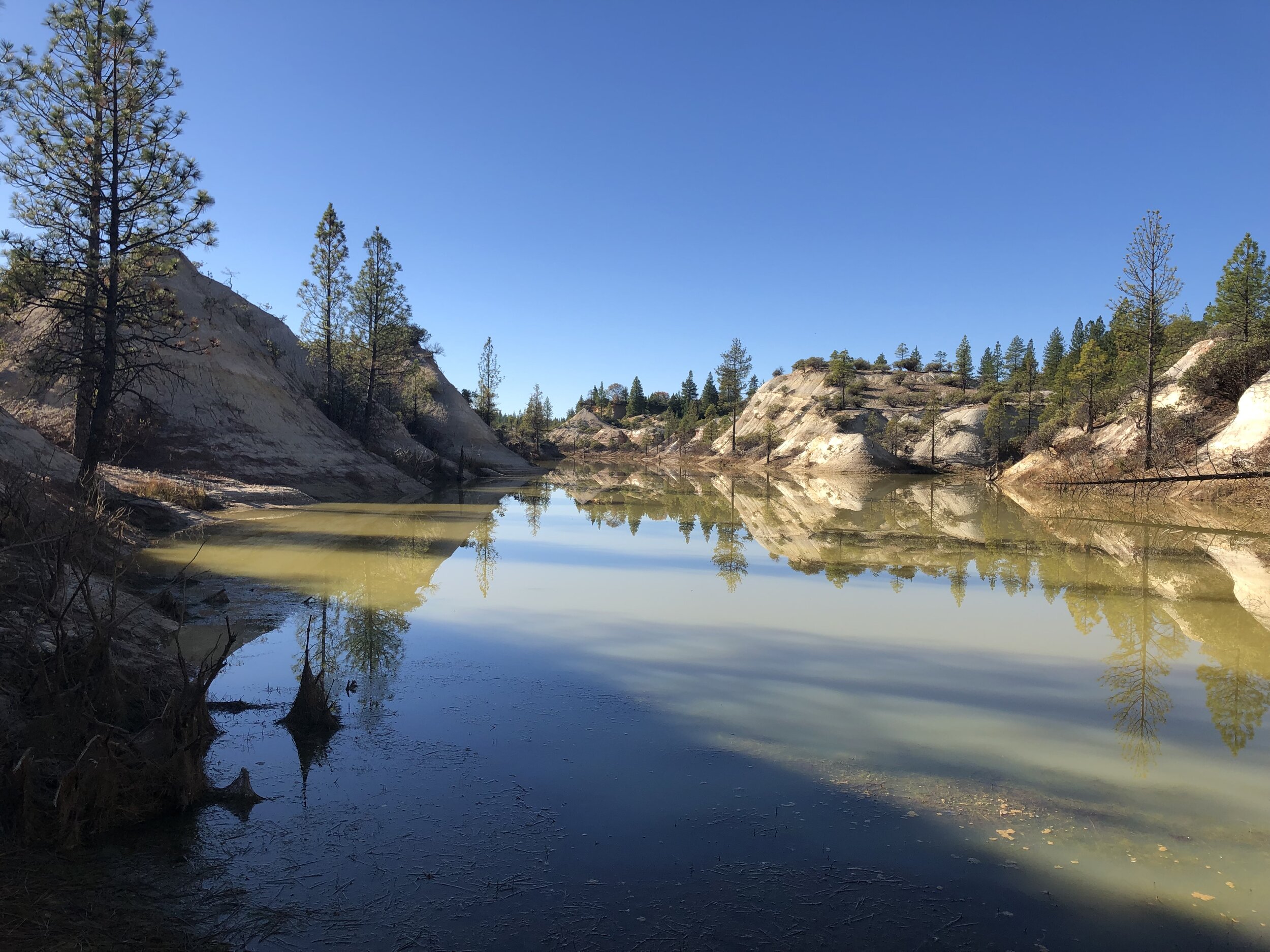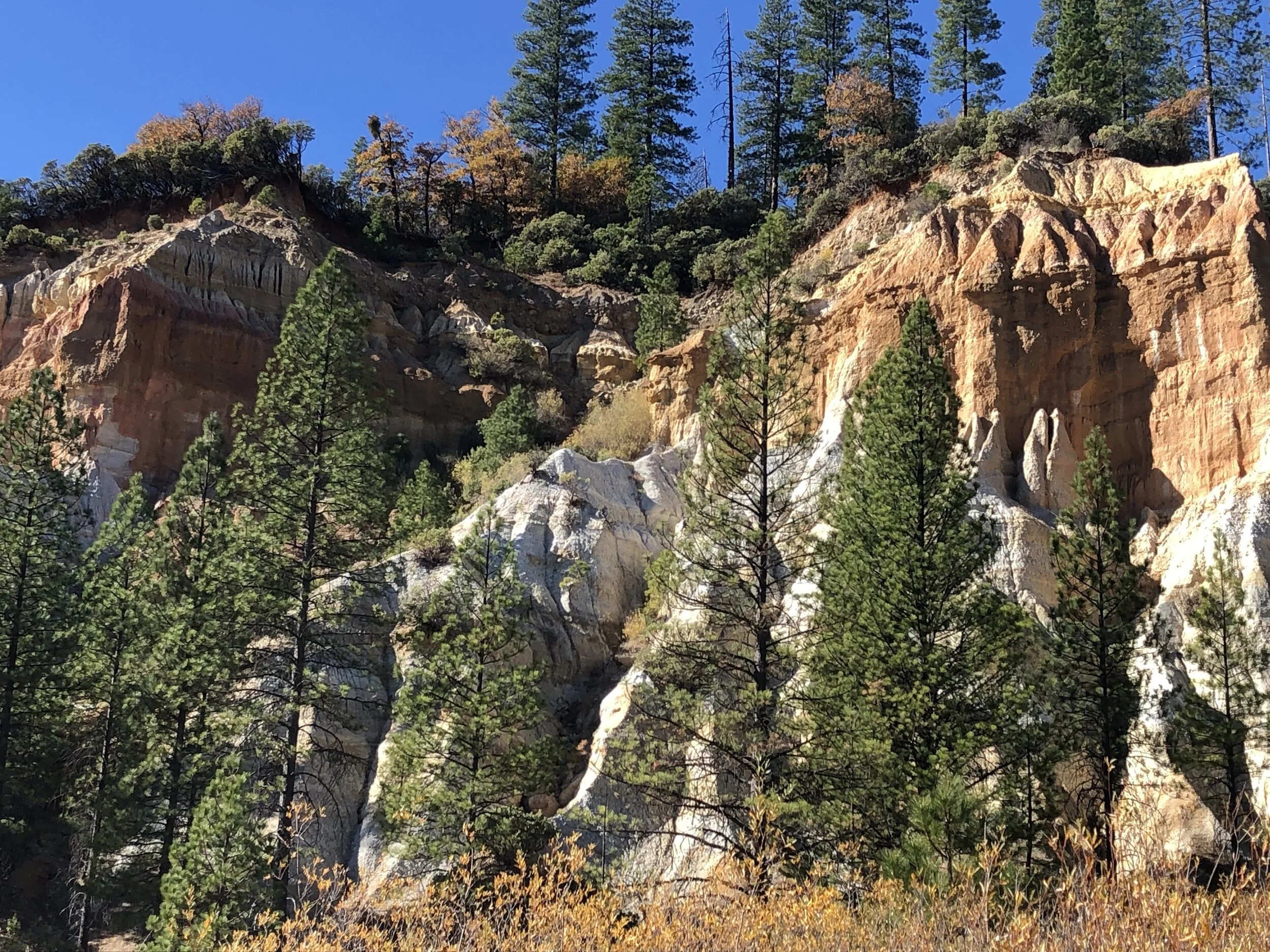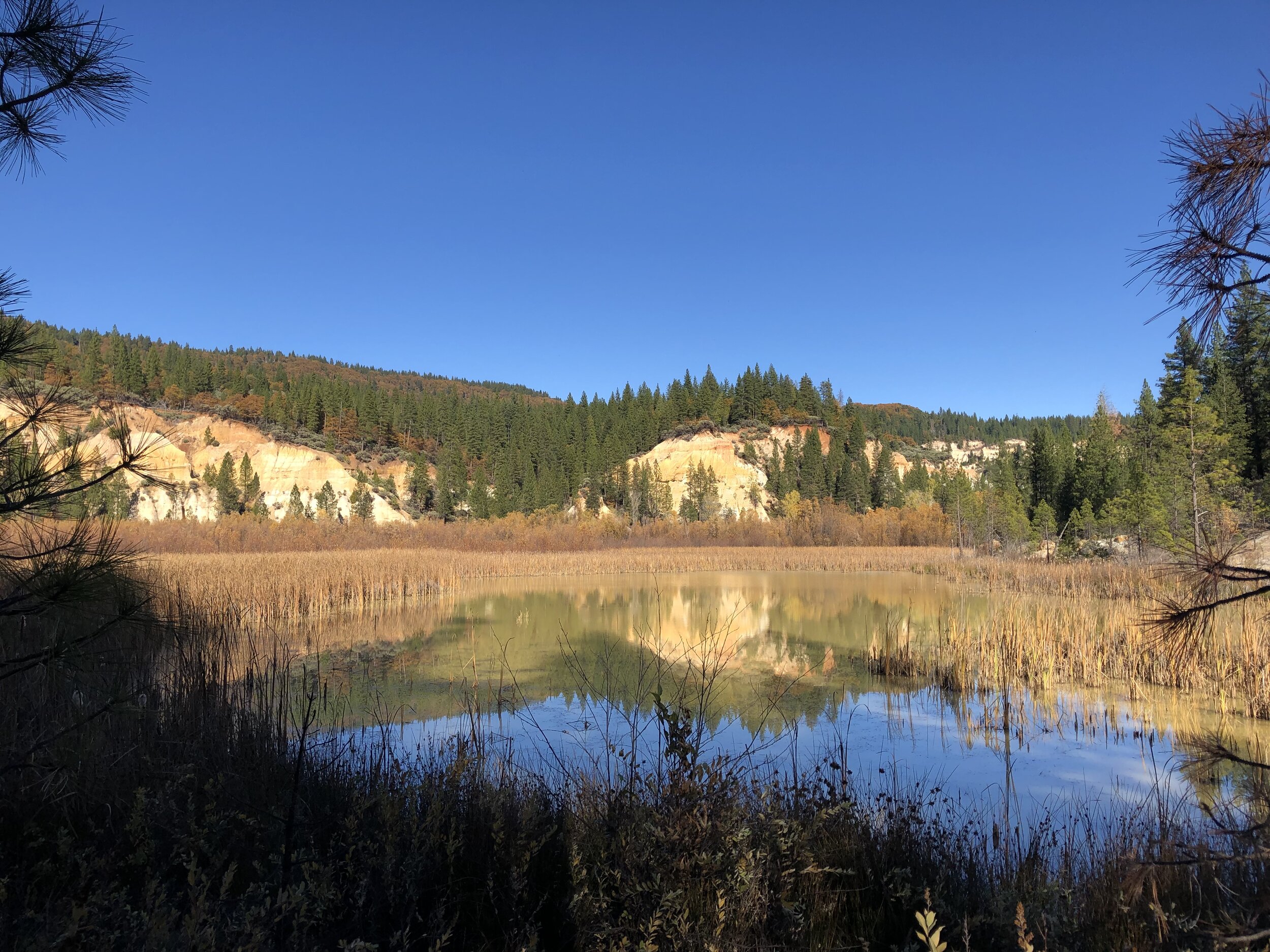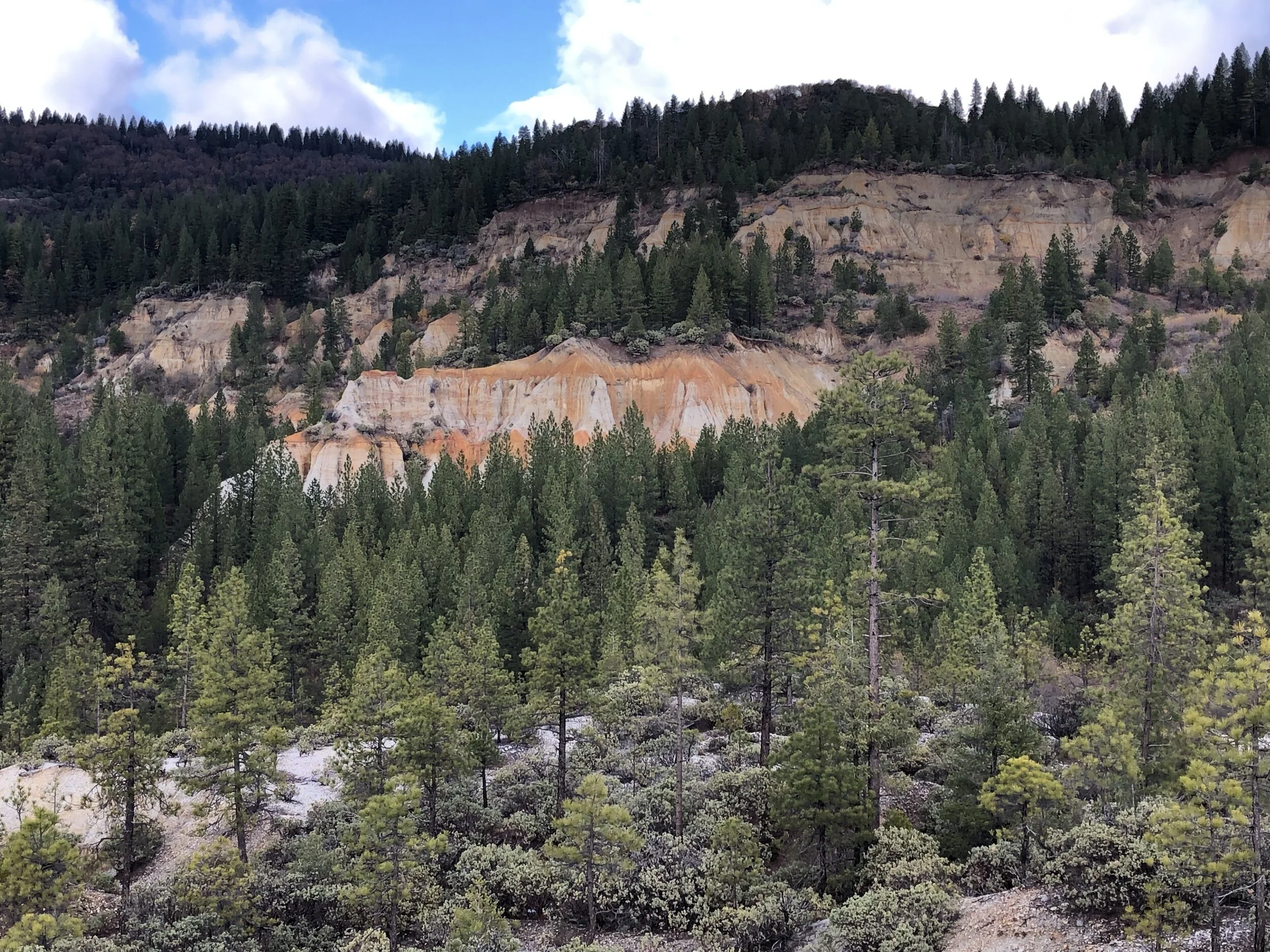
Foraging in Gold Country
MALAKOFF DIGGINS STATE HISTORIC PARK

Nestled in the foothills of the Sierra Nevada Mountains just outside Nevada City is Malakoff Diggins California State Historic Park. It is the site of the most productive hydraulic mine in California, now defunct and in a state of protected restoration. In 1853, three miners designed a mining system that rerouted water from alpine lakes in the Sierra Nevada Mountains through huge gravity-powered cannons to blast away the hillsides, to reveal flakes of gold hidden in the Earth. This single operation dislodged 41 million yards of earth. It sent a slurry of mud downstream, flooded the local waterways and the Sacramento Valley, destroying California’s farmland. So much mud flowed downstream that even the San Francisco Bay, some 200 miles away, rose at a rate of one inch per year during the mine’s peak production. Eventually this destruction led to an effective ban on hydraulic mining - the first environmental protection law in the United States.

The natural erosion of water trickling down from the Sierras now contrasts with the destructive erosion at the Malakoff mine, where quartz, serpentine, clay, and limestone were pulverized from the mountainside by large water cannons. Using up to 100 million gallons of water per day at the mine’s peak production, the massive quantity of water necessary for this production led to the development of Northern California’s extensive reservoir system. After this form of gold mining became effectively outlawed in the mid 1890’s, the infrastructure began to be utilized for hydroelectric power, ultimately becoming PG&E.



From the Earth’s internal fire, these colors are testimony to timescales that surpass Humanity’s history and its future.

















